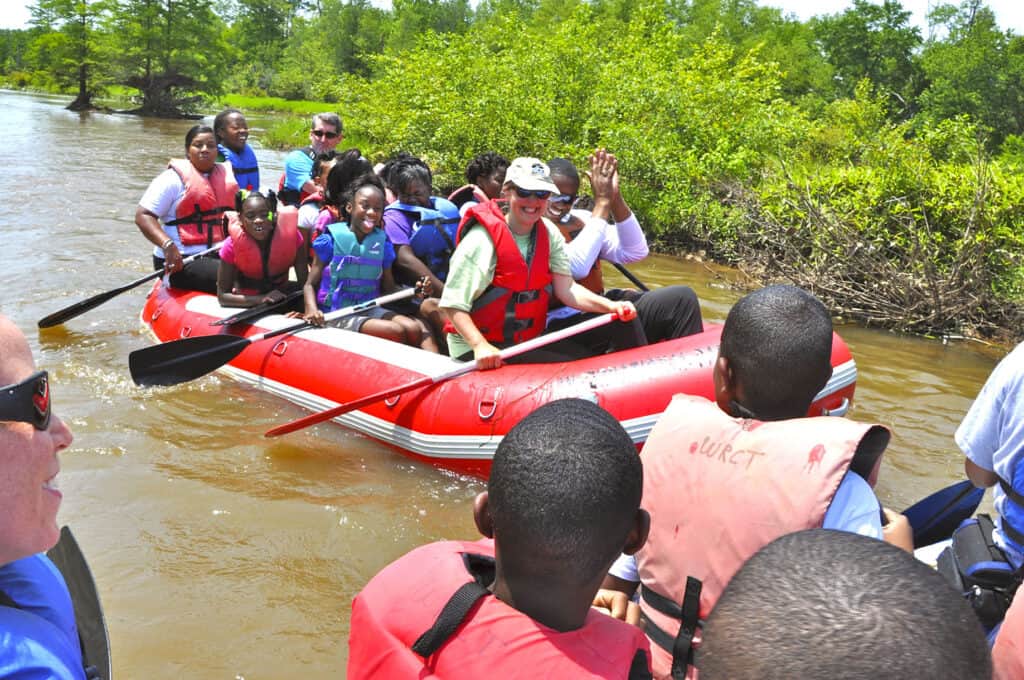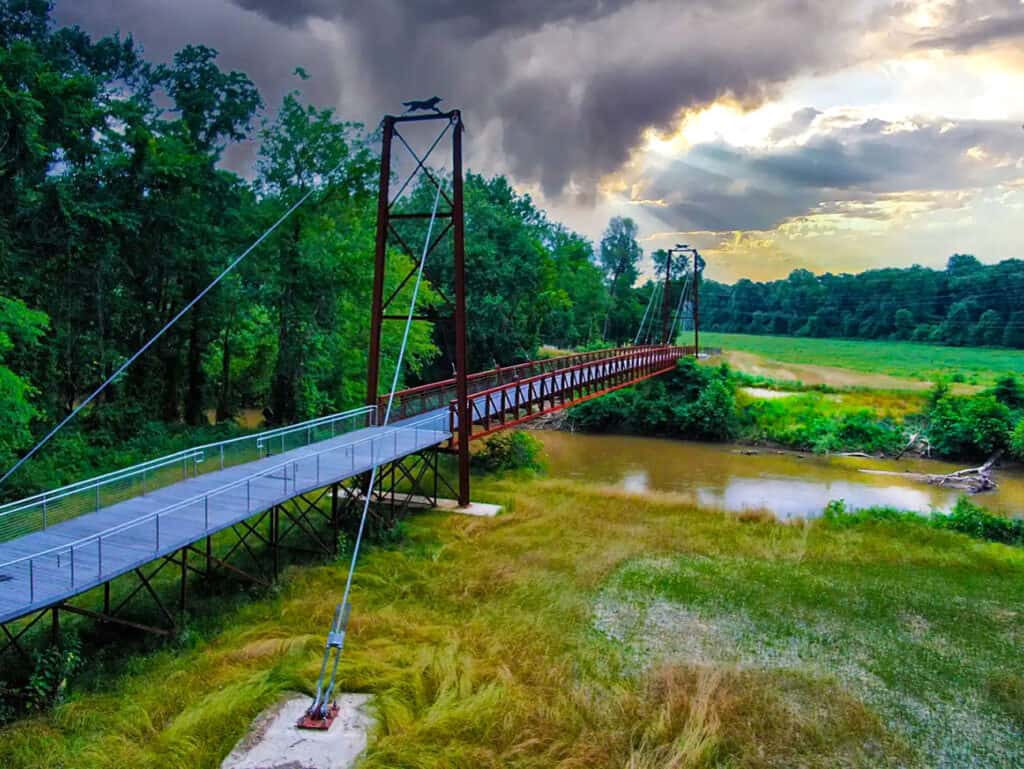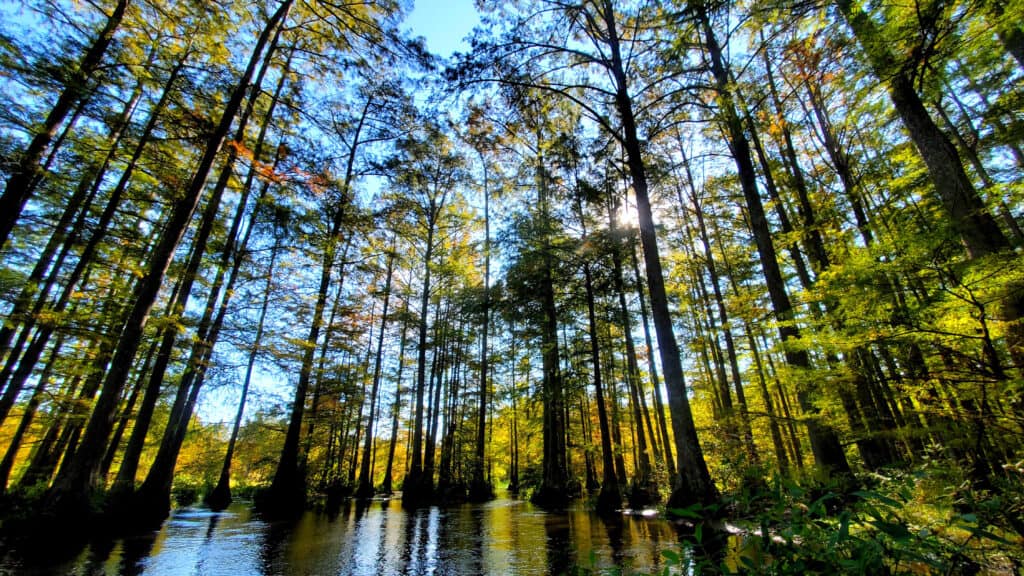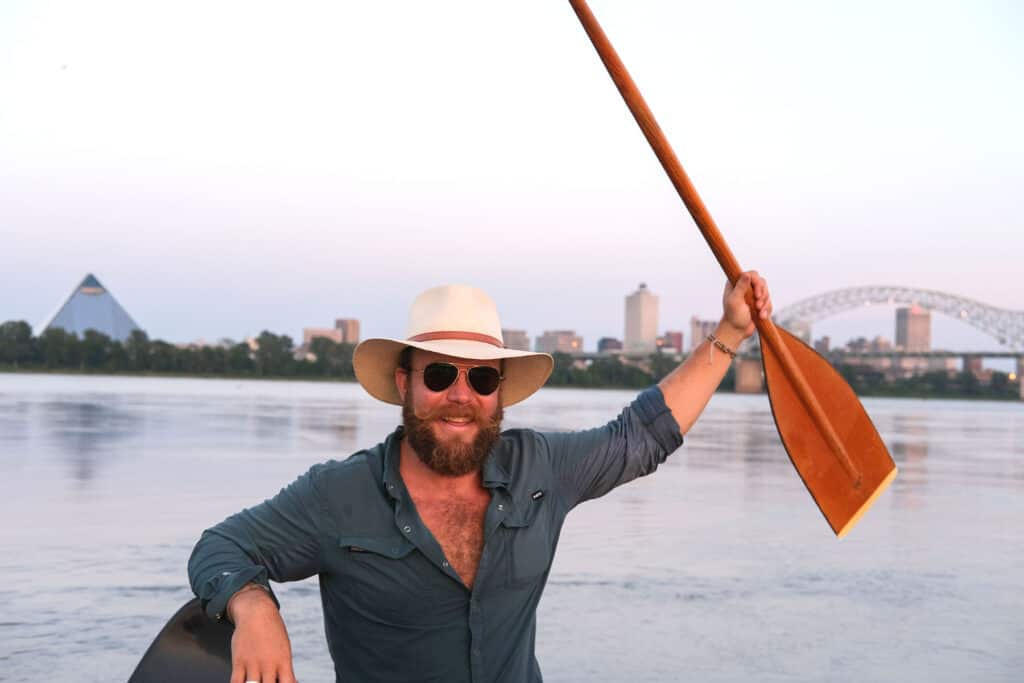Kayaks, first built by the Inuit from sealskin and used for hunting, have been around for approximately 4,000 years. Most kayaks are now made from plastic, but the basic shape and simplicity of design have continued. Interest in recreational kayaking, which was growing in popularity even before the pandemic, has increased exponentially by 87.3 percent between 2010 and 2021. It is low impact, great aerobic exercise, and such a calming way to get outside. But kayaks require a body of water. As it happens Memphis, not generally thought of as a kayaking mecca, has several surprisingly beautiful places to put a kayak in the water not far from downtown and one relatively new option for getting out on the Mississippi.
Once does not have to go far from central Memphis to put a kayak in the water. Shelby Farms Boat House at Hyde Lake rents canoes, kayaks, and stand-up paddle boards for reasonable fees in the spring and summer, but you can paddle your personal float in Hyde Lake anytime the park is open. Conditions around the lake can sometimes be tricky and windy but usually Hyde Lake is a spacious and easy location for Memphians to try out some paddling with easy access and an accessible boat ramp. The lake is a particularly lovely place to view the local sunset. Don’t forget another local favorite, Poplar Tree Lake at Meeman-Shelby Forest State Park, in Millington, approximately a 30-minute drive from Memphis. The put-in for this paddle is a ramp at the end of the parking lot on Grassy Lake Road. Kayaking around the rim of the pond is a 1.5 to 2-hour trip, where it’s possible to see bald eagles, herons, and owls. There are ranger- led paddles in the summer. Becky France, a Memphian who is one of those newer kayakers, enjoys paddling here and stopping at the Shelby Forest General Store for lunch or a snack afterward–a great day trip.



Several other easy- paddle ponds to check out within an hour of Memphis are lakes at Wapanocca National Wildlife Refuge (just over the bridge in Arkansas), Sardis Lake (due south on I-55), and Big Hill Pond State Park (southwest of Memphis).
Any survey of paddling in and around Memphis must include the Wolf River and the Wolf River Conservancy (WRC). Founded in 1985, the WRC has protected almost 19,000 acres along the Wolf River as it runs from its source–spring-fed Bakers Pond in Holly Springs National Forest– northwest for about 100 miles. Without the WRC the Wolf would not provide the great habitat for 430-plus plants and the recreational space both on the Greenway and on the Wolf itself. The Wolf empties into the Mississippi slightly north of Mud Island and along the way provides plant, bird, and animal habitat, flood and pollution control, and recharge of the Memphis Sand Aquifer.
There are three sections of the Wolf River that offer good opportunities for kayaking. The Ghost River section, preserved in 1995 by the WRC as the Ghost River Natural Area, meanders from La Grange to the Bateman Road Bridge, and offers five distinct ecosystems, including cypress- tupelo swamp. The river channel spreads out here and becomes a “ghost of a river.” Blue trail markers help to guide boaters through, although it might be best to go with a guide for the first time. Cypress knees, downed trees, and Class I moving water make the river here and in the Lost Swamp section slightly more technical and difficult. WRC runs day trips here and to other sections of the river on the first Saturdays of the month. Sign up on their website at www.wolfriver.org. The Ghost River section is about 9.5 miles and takes approximately six hours.


The Lost Swamp section of the Wolf River is not as well known as the Ghost River, but offers another six miles of the upper, more pristine Wolf River from Bateman Road Bridge to Moscow and takes an average of four hours to paddle. Again this can be an intermediate paddle because of bald cypress knees and tight turns that can make the trail more challenging. This summer, paddlers saw egrets, kingfishers, and beaver tracks, among other wildlife. This section has a cypress filled swamp known as the cathedral, where on occasion the bells of Moscow Methodist Church ring you in.
The urban section of the Wolf River from Germantown Parkway to Walnut Grove is a wider, less technical section and takes about an hour to paddle. This section is not as wild as the upper Wolf, but it is a fun and an easy paddle and convenient trip that gives some perspective of being on the Wolf River.
ANDe Demetriou of Blues City Kayaks started as a volunteer guide for WRC and has been running trips to the Wolf River since 2019 when he realized that there wasn’t a local canoeing outfitter. He explained that in the summer of 2020, when outdoor activities were more possible, business just took off. “People wanted to get outside and do some active things. It happened to be good and bad timing at the same time. There were weekends we were running four tours.” Blues City Kayaks only offers rentals with guided tours as part of their focus on safety. Demetriou says, “We want to be able to reach out to people who may be a little bit uneasy about getting out on the water and make them feel a little bit safer.” Blues City Kayaks also offer river kayaking skills courses for those who want to improve skills and learn safety techniques. Demetriou says he would be remiss not to offer one last bit of safety advice—always wear a life jacket.


Currents in Memphis’ crown jewel, the mighty Mississippi, have always made it tricky to paddle, but one new outfitter has figured it out. Mississippi River Expeditions is an exciting and novel way of seeing the Mississippi River in 30-foot custom-made sailing canoes that hold 10 to 12 people. Started in 2021, owner Matthew Burdine says he wanted to bring a little of the Grand Canyon rafting experience to the Mississippi. The group is based at Mud lsland Marina with several trips offered ranging from one to three hours, half day, full day, and multi-day camping expeditions. Some trips might include crossing the river to Loosahatchie Island, a swim in the calmer western waters, and charcuterie on a sandbar. Each canoe comes with an experienced guide. These are privately chartered trips with just your group, no experience necessary. Burdine says the most popular outings are sunset cruises. These put in at the marina, head upriver to the mouth of the Wolf, paddle across and set up charcuterie, and afterward begin the paddle back toward downtown with the sunset in view. He says these paddles show Memphians a whole new perspective of themselves. With these canoes Burdine says he is able to do what Native Americans were doing on the Lower Mississippi for about 10,000 years.
This fall and winter commune, connect, and rejuvenate in the waters in and around Memphis. If you look for the water (and paddling buddies on Facebook groups), you can find it.




